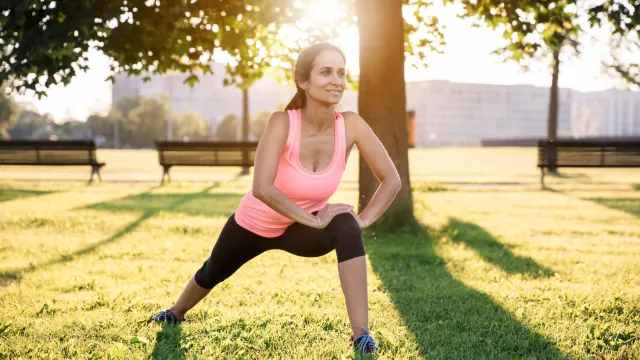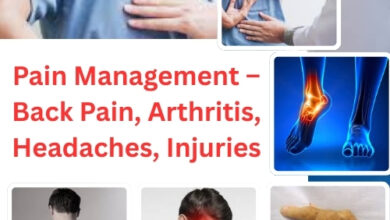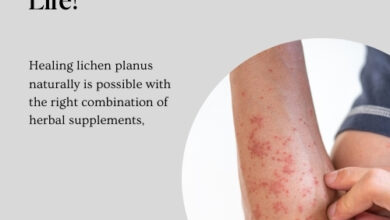The foods to eat – and avoid – for healthy bones
After the age of 30, we naturally start to lose bone mass – here are the foods to eat to protect against breaks and fractures

The majority of age-related symptoms are quite evident, such as wrinkles, grey hairs, and a rise in aches and pains. However, osteoporosis, also known as brittle bone disease, is one sign that frequently goes unnoticed until it’s too late.
In the UK, over three million people suffer from osteoporosis, which is often identified until after a bone fracture. “Your body produces a lot of bone when you’re young, but you reach peak bone mass around the age of 30,” explains Julia Thomson, nurse manager for the Royal Osteoporosis Society. “Your body starts to break down bone more quickly than it can grow new bone, which increases the risk of breaks and fractures.”
The primary risk factor is age, although gender and genetics also matter. Research suggests that up to 20% of bone loss can occur after the menopause, for example.
It’s never too late to start, though, and there are strategies to counteract this. Julia Thomson says, “Exercise is important, but you can also slow down bone loss by combining it with a healthy diet.” So, in order to maintain strong bones, what nutrients should you include in your diet?
Eat yoghurt to slash your risk of fractures
“The bones are like the body’s calcium reservoir; if there’s not enough in your blood, the body goes to the bones to get it instead,” explains Dr. Richie Abel, senior lecturer in musculoskeletal sciences at Imperial College London and co-host of the bone health podcast, Bone Up. “A whopping 99 percent of the body’s calcium is stored in the bones.” Adults should consume 700 mg of calcium daily, or approximately 1000 mg if they have osteoporosis. A mug of milk has roughly 300 milligrammes, so making sure you get enough is not too difficult, and it can have a significant impact on bone health.
The inclusion of two pots of yoghurt or portions of cheese every day—high in both calcium and protein—reduced the number of hip fractures by about half in just two years in one randomised controlled research conducted in 2021 in Australian care facilities. Calcium content in low-fat alternatives is equal to that of high-fat options. If dairy doesn’t appeal to you, don’t panic; fish and green veggies are also excellent sources.
If you take one supplement, make it vitamin D
“Calcium and vitamin D function together,” explains My Private Diet founder and dietitian Emer Delaney. “You can’t properly absorb calcium from milk or other sources if you don’t have vitamin D in your intestines to help with calcium absorption.”
Reduced bone density may result from this; in a 2020 study, only 4.8% of patients who underwent hip fracture surgery had normal vitamin D levels. Vitamin D is naturally present in trace levels in red meat and fatty seafood. It is also added to some cereals and fat spreads. The sun is the finest source, though, as it produces vitamin D when it shines on our skin. Sadly, as we age, our capacity to perform this task decreases; also, this nation receives very little sunlight. Because of this, throughout the winter months, the vitamin D levels of over half of adult UK citizens are below normal. Twenty per cent of persons in the UK are vitamin D deficient, even in the summer. The government advises that during the autumn and winter, everyone should think about taking a daily 10mcg vitamin D supplement. Those who are unable to go outside or who cover up for religious reasons should take one year-round.
Four prunes a day for healthy vitamin K
Not only does vitamin K aid in blood clotting, but it also serves as a building ingredient for bones. “It is involved in bone formation and mineralisation, a process that makes bones strong, and activates the protein osteocalcin, the second most abundant protein in bone after collagen,” explains Julia Thomson. It can be found in meals like meat, fish, and green leafy vegetables as well as fermented foods like yoghurt and soft cheese. Prunes are a particularly good source, says Emer Delaney. “This year’s study revealed that eating four or five prunes a day for 16 months helped maintain bone density and even seemed to prevent further bone loss in postmenopausal women with osteopenia, a condition that involves bone loss less severe than osteoporosis.”
Protein isn’t just for muscles
“Central to bone health” is protein. About half of your bone’s volume is made up of it, and it creates the framework that other minerals adhere to, strengthening your bones, according to Professor David Armstrong, a co-presenter of Bone Up, an expert on osteoporosis, and a visiting chair at Ulster University. A diet lacking in protein has been linked to altered rates of bone formation and disintegration as well as a reduction in the body’s capacity to absorb calcium, according to research. Meat, fish and shellfish, dairy products, eggs, almonds, and pulses are foods high in protein. The UK recommends 46g of protein for women and 56g of protein for men per day.
Nonetheless, a study found that less than 50% of participants met the suggested amount, indicating that older persons frequently fall short of expectations. Dr. Abel continues, “It’s crucial to keep in mind that protein is also important for muscles.” Your muscles have something to do when they tug on your bones. In response, your bones will grow thicker and replenish themselves, maintaining or enhancing their strength. Your muscles pull harder on the bones as they become stronger. This implies that as you age, your bones become stronger and less likely to break, stumble, or fall.
Eat oranges, strawberries and broccoli to stave off osteoporosis
According to studies, vitamin C has antioxidant properties that may help shield bones from deterioration in addition to stimulating the growth of bone-forming cells. Increased vitamin C intake was linked to a 33 percent lower risk of hip fracture, osteoporosis, and better bone density, according to a 2018 assessment of many independent research. According to Emer Delaney, osteoporosis can occur when there is excessive loss of calcium and other minerals from the bone structure. Bone density is a measurement of these minerals. Since it’s present in so many fruits and vegetables, including oranges, strawberries, broccoli, Brussels sprouts, and potatoes, you should have little trouble getting enough through your diet.
Get plenty of magnesium and potassium
The bone density of nearly 73,000 post-menopausal women in a 2014 study showed that those who took 400 mg of magnesium daily tended to be 2-3% greater than those who took half this amount. According to Emer Delaney, “its role in bone health involves converting vitamin D into the active, form, which helps the body absorb calcium.” Additionally, calcium and other minerals that harden and build bones work with potassium. A healthy, balanced diet provides more than enough for the majority of healthy persons; a single 180g serving of cooked spinach provides about half of your daily required intake. Additionally, dark chocolate, green vegetables, avocados, and nuts contain it.
Your body cannot create potassium on its own; you must obtain it from food. This mineral helps maintain healthy bones by lowering the quantity of calcium lost through urination. It has also been discovered to lessen blood acidity. “This could be significant because the body may be trying to counteract the acidity in your blood by removing calcium from your bones,” Julia Thomson continues. Theoretically, this can subsequently cause your bones to weaken.
You should consume foods high in potassium, such as orange juice, tomatoes, bananas, turkey, beans, and pulses, to maintain those levels. Supplementing with potassium is not advised unless a doctor has prescribed it. This is especially important for elderly individuals, whose kidneys may be less able to eliminate potassium from the blood, putting them at higher risk of injury.
Salt and saturated fats are bad for bones
Excessive intake of salt is detrimental to your health in numerous ways, including your bones. Elevated salt intake raises the excretion of calcium in the urine, which is linked to reduced bone mineral density. The Department of Health states that the daily allowance for salt intake, including salt added to meals, is 6g, or about one level teaspoon. According to Emer Delaney, “salt is hidden in so many common foods, from cheese and bread to prepared meals.” Look for food labels that are helpfully colour-coded in red, green, and amber on the packaging; if not, choose low-sodium products.
Saturated fat should be minimised, while omega-3 fats—“healthy fats” found in foods like fatty fish—are crucial for bone health. Epidemiological evidence suggest that high-fat diets, particularly those high in saturated fatty acids, may raise the risk of fractures and impair bone density in addition to raising the risk of heart disease and stroke.
One explanation for this could be because too much fat attaches itself to the calcium before the bones can absorb and use it. Another theory links high-fat diets to a deficiency in other nutrients essential to bone health.
Why a calcium supplement is a last resort
In certain situations, it may be advised to take supplements, especially those high in calcium and vitamin D. This is especially true for elderly individuals whose levels are already low and those suffering from illnesses like Crohn’s disease, coeliac disease, or severe liver disease, which can impair the body’s ability to absorb nutrients.
But it’s crucial to understand that, according to Professor Armstrong, calcium supplements can also interfere with the absorption of some antibiotics and thyroxine, a drug used to treat an underactive thyroid, among other things. They can also induce upset stomach, diarrhoea, or constipation. Thus, although supplementing with elemental form of calcium is usually the last resort, taking more calcium is often beneficial. For most people, a nutritious, well-balanced diet will be sufficient, negating the need for supplements.




